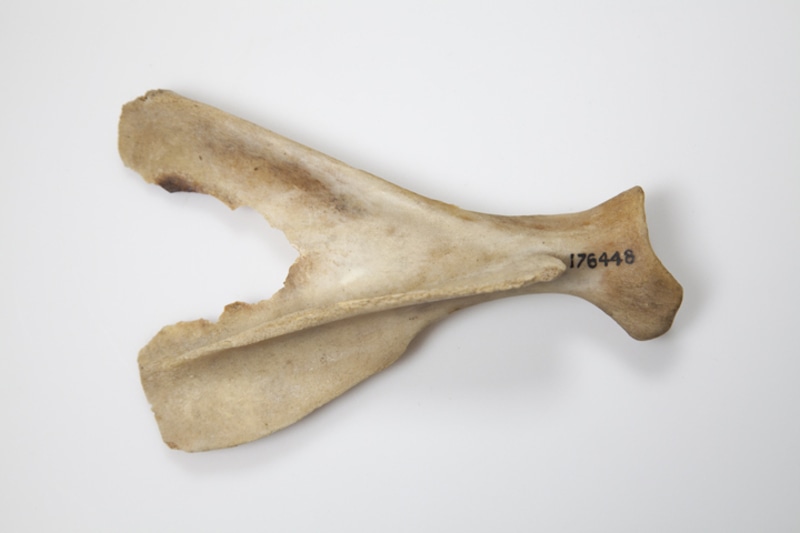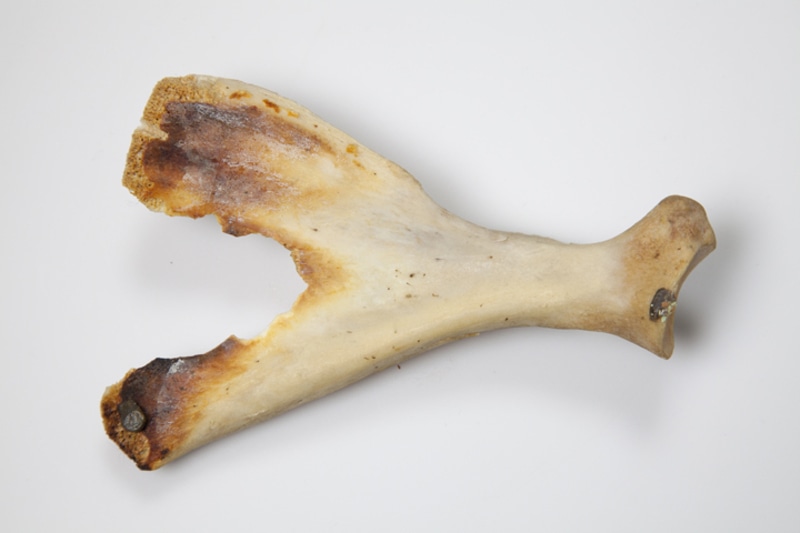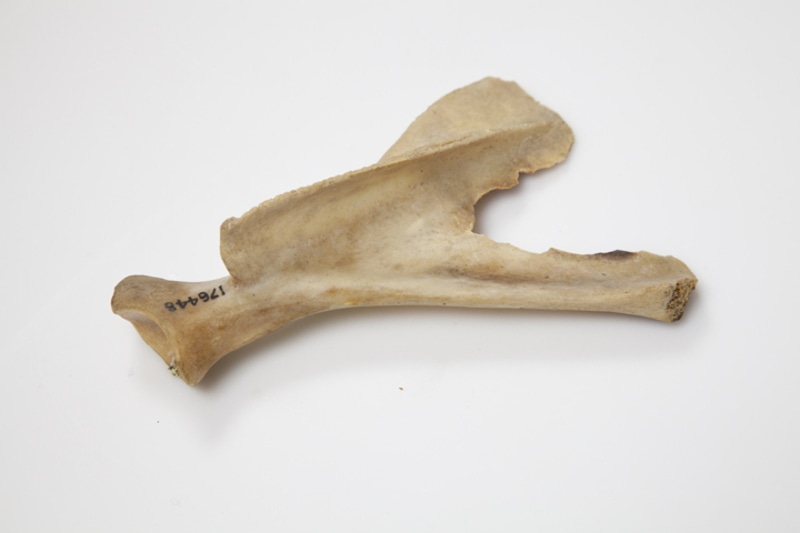shoulder blade Item Number: 1927.1734 . 176448 from the The Field Museum




Citations From Vanstone (1982) Article
« The consulting of oracles so as to determine where and when to hunt and to know the future with reference to the weather, illness, and personal matters was extremely important to the Lake St. John Montagnais. It is a subject that has been discussed in considerable detail by Speck (1935, pp. 138-147). A more recent discussion of the subject, with a different interpretation, is found in Tanner (1979, ch. 6). »
Vanstone, James W. "The Speck Collection of Montagnais Material Culture from the Lower St. Lawrence Drainage, Quebec." Fieldiana. Anthropology. New Series, No. 5 (October 29, 1982), p.19.
« Scapulimancy with the bones of a variety of animals, especially beaver and hare, along with the three examples of burned scapulae in the collection, apparently those of sheep, are described and illustrated by Speck (1935, pp. 144-145). These scapulae were burned and interpreted by an informant at Speck's request. The pattern of lines on the first scapula (fig. 32b) were said to denote the approach of trouble; those on the second (fig. 32a), the return of good fortune after bad luck; and the third (fig. 32c) a sign of good luck in the form of monetary gain. The latter two scapulae have broken in the burned areas since they were illustrated by Speck (1935, p. 145, fig. 14b-c). »
Vanstone, James W. "The Speck Collection of Montagnais Material Culture from the Lower St. Lawrence Drainage, Quebec." Fieldiana. Anthropology. New Series, No. 5 (October 29, 1982), p.19, fig 32a (p.60).
Translation Of Citations From Vanstone (1982) Article
« La consultation des oracles, qui servait à déterminer où et quand chasser et aussi à connaître le futur, notamment en ce qui a trait aux conditions météo, aux maladies et aux questions personnelles, était extrêmement importante pour les Montagnais du Lac-Saint-Jean. C’est un sujet qui a été discuté de façon très détaillée par Speck (1935, pp. 138-147). Une discussion plus récente sur ce sujet, comportant une interprétation différente, se retrouve dans Tanner (1979, ch. 6). »
Vanstone, James W. "The Speck Collection of Montagnais Material Culture from the Lower St. Lawrence Drainage, Quebec." Fieldiana. Anthropology. New Series, No. 5 (October 29, 1982), p.19.
« La scapulomancie pratiquée avec des os de divers animaux, spécialement du castor et du lièvre, ainsi qu’avec les trois exemplaires de scapulas brulées qui se trouvent dans la collection, apparemment celles de moutons, étaient décrites et illustrées par Speck (1935, pp. 144-145). Ces scapulas étaient brûlées et interprétées par un informateur à la demande de Speck. Le schéma des lignes sur la première scapula (fig. 32b) signifiait l’approche d’un problème ; ceux de la seconde (fig. 32a), le retour de la bonne fortune après la malchance ; et le troisième (fig. 32c) un signe de chance sous la forme d’un gain monétaire. Les deux dernières scapulas se sont brisées dans les sections brûlées, depuis qu’elles ont été illustrées par Speck (1935, p. 145, fig. 14b-c). »
Vanstone, James W. "The Speck Collection of Montagnais Material Culture from the Lower St. Lawrence Drainage, Quebec." Fieldiana. Anthropology. New Series, No. 5 (October 29, 1982), p.19, fig 32b (p.60).
Item History
- Made in Pekuakami, Lac Saint-Jean, Lake St. John, Labrador, Canada
What
- Name
- shoulder blade
- Identification Number
- 1927.1734 . 176448
- Type of Item
- shoulder blade
- Material
- bone
Who
- Culture
- Ilnu, Montagnais and Innu
Where
- Holding Institution
- The Field Museum
- Made in
- Pekuakami, Lac Saint-Jean, Lake St. John, Labrador, Canada
Other
- Nom De L'objet
- Omoplate (Scapula)
- Matériaux
- os
- Ethnic Group
- Montagnais
- Collection
- Lake St. John Objects
- Provenience
- North America, Canada, Quebec, Labrador, Lake St. John